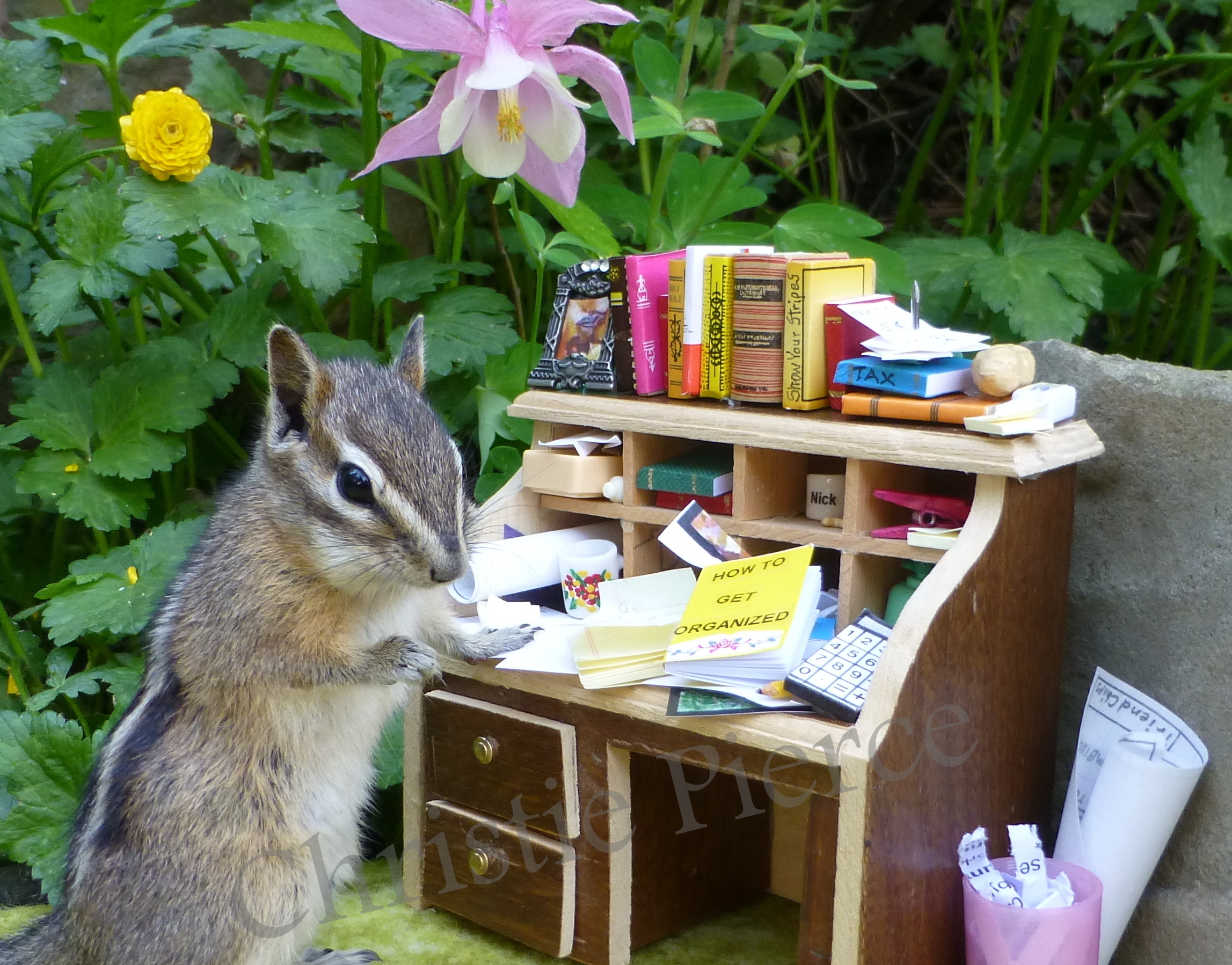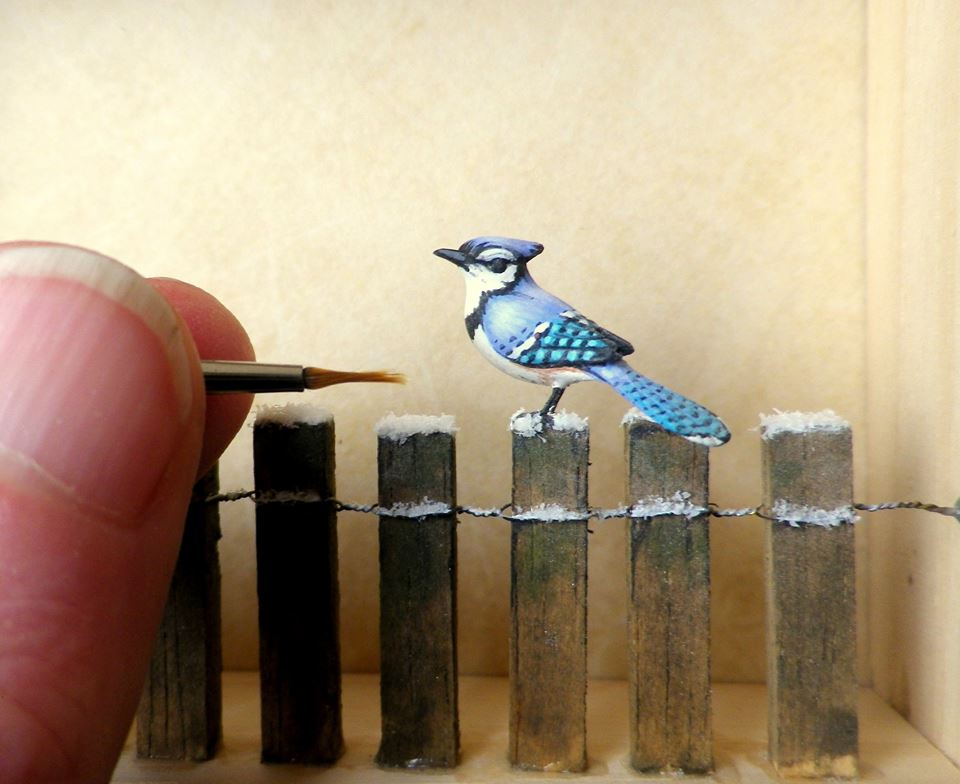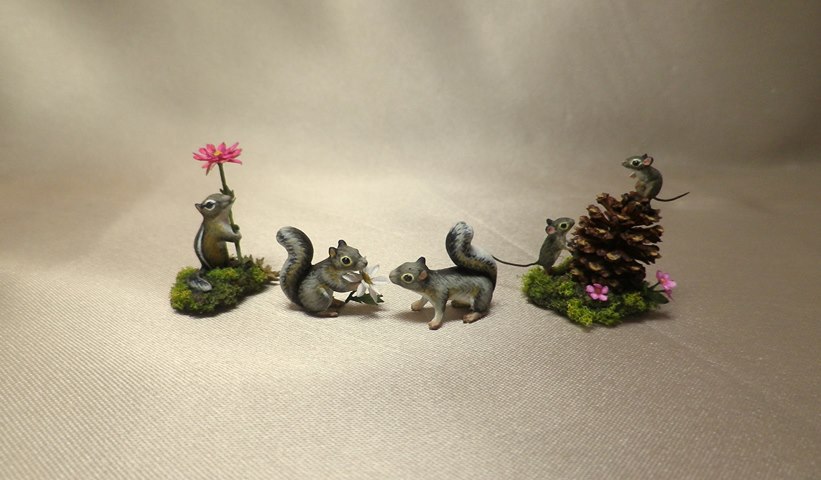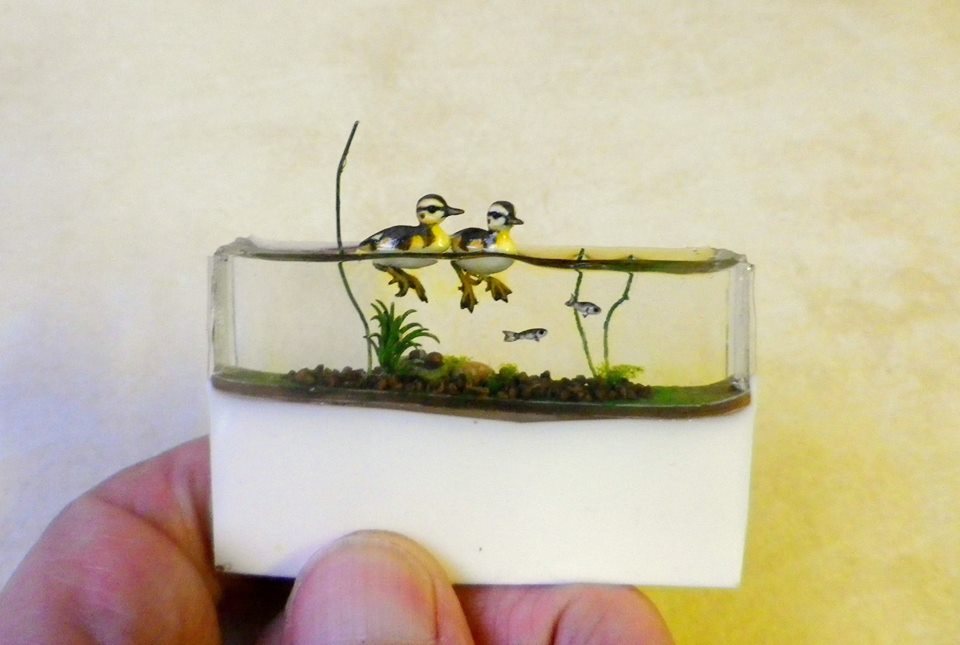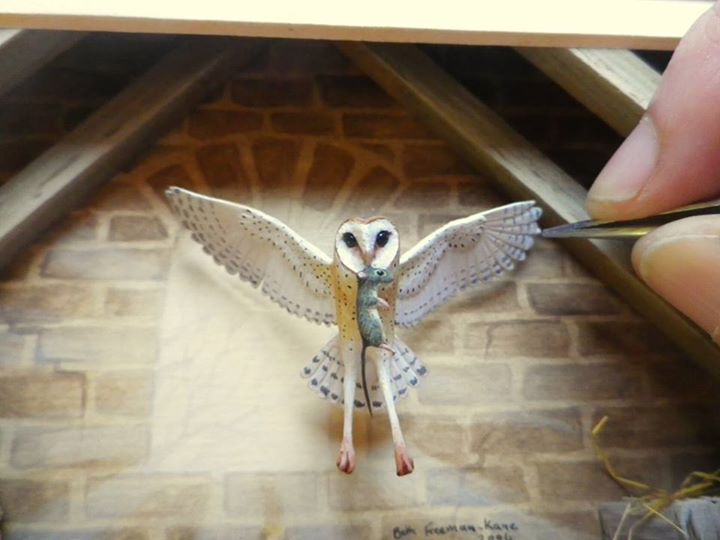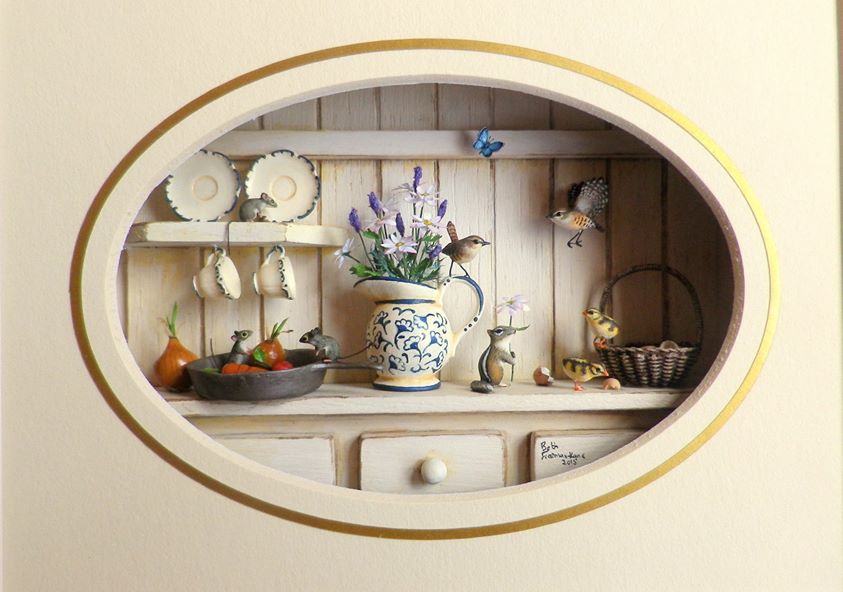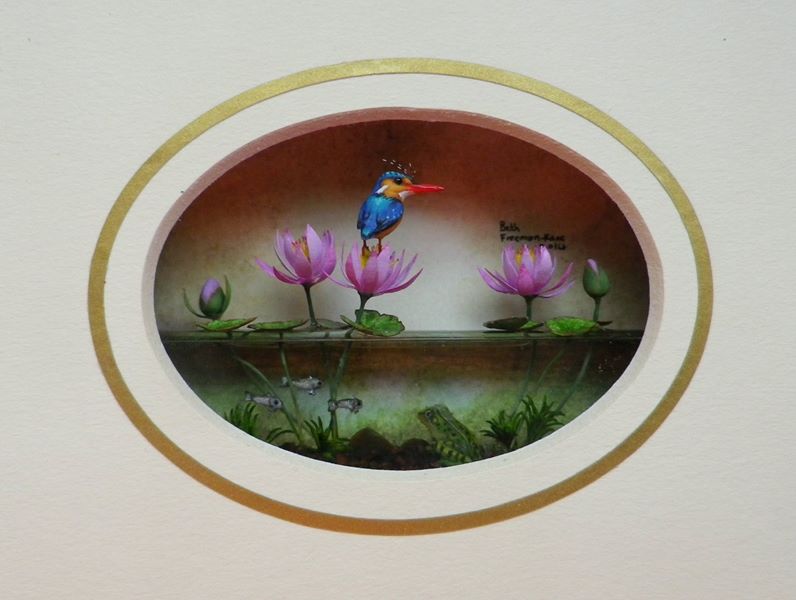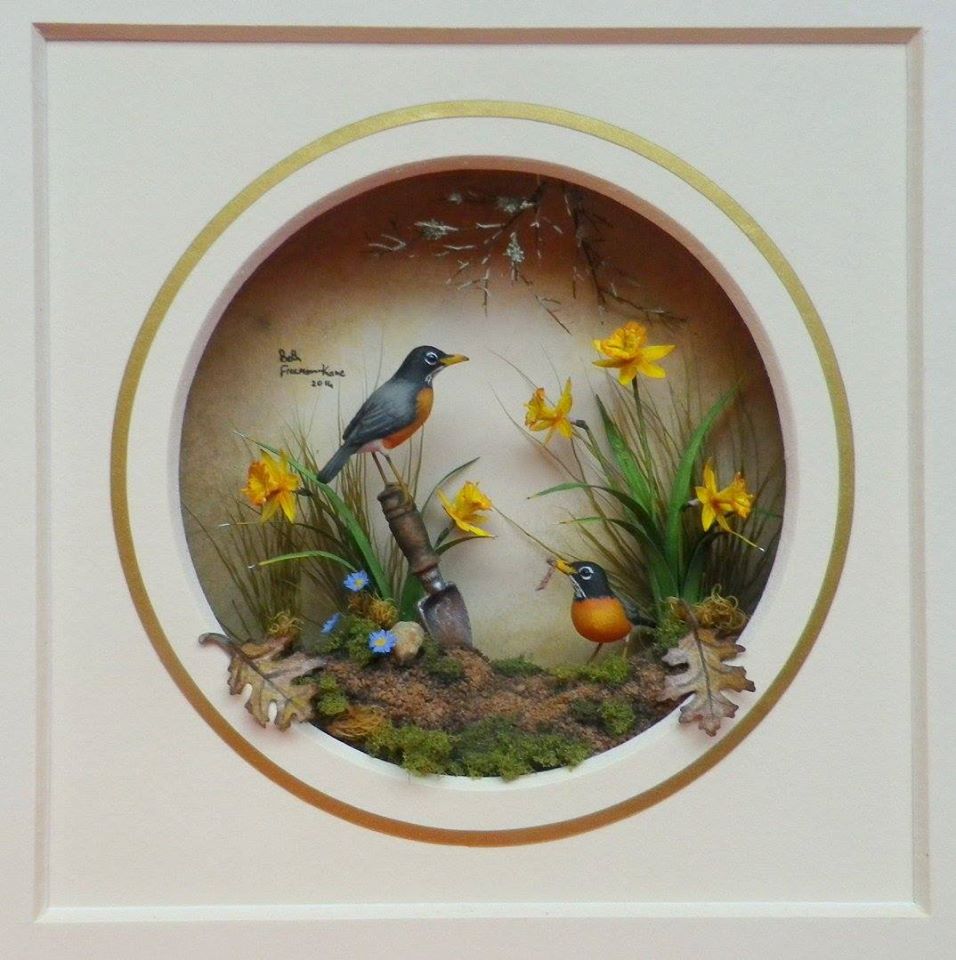FriendChips Miniature Photography Series by Christie Pierce
| Website |
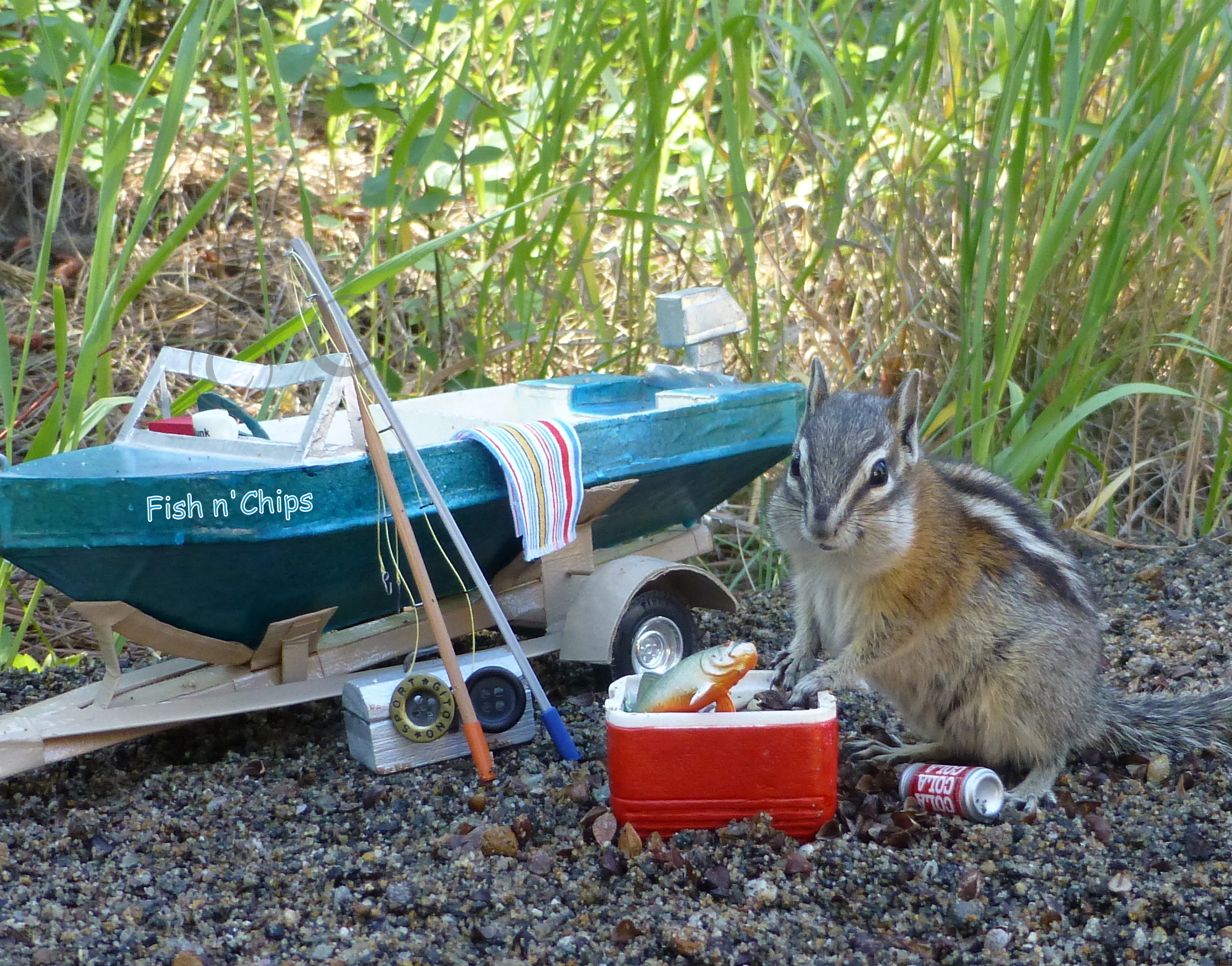
How did you decide on this unique photography project?
It all started back in 2012. We always had chipmunks and since we don’t own a dog or a cat, these chipmunks got a bit braver and began coming closer to our house. One of the first chipmunks we photographed – we called him Mr. Stubbs, Founder and Squeak-EO of FriendChips – used to eat out of our hands. I attended an event where teeny, tiny playing cards were used as drink tickets. Well, I brought these cards home and put some food for the chipmunks on them, and the photo looked like he was playing cards with my husband Paul’s hand in the photo! After taking lots of photos in 2012, I finally started to perfect the art of capturing these chipmunks at just the right moment in time. I soon discovered what people would buy, and soon enough, the public fell in love with FriendChips photography.
I use low-tech everything. There’s no retouching these photos. I mean, I don’t even have the Internet at home! I will do a little bit of contrasting with the light in the photo and I will remove small bits of seeds — but that’s it! The entire time I’m photographing, I’m about 18 inches away, with a pocket full of seeds and an extra battery for my camera! Frequently I’ll tape things down on the set and you don’t really know whether the scale will work until you’re out there shooting and the chipmunks have entered the scene.
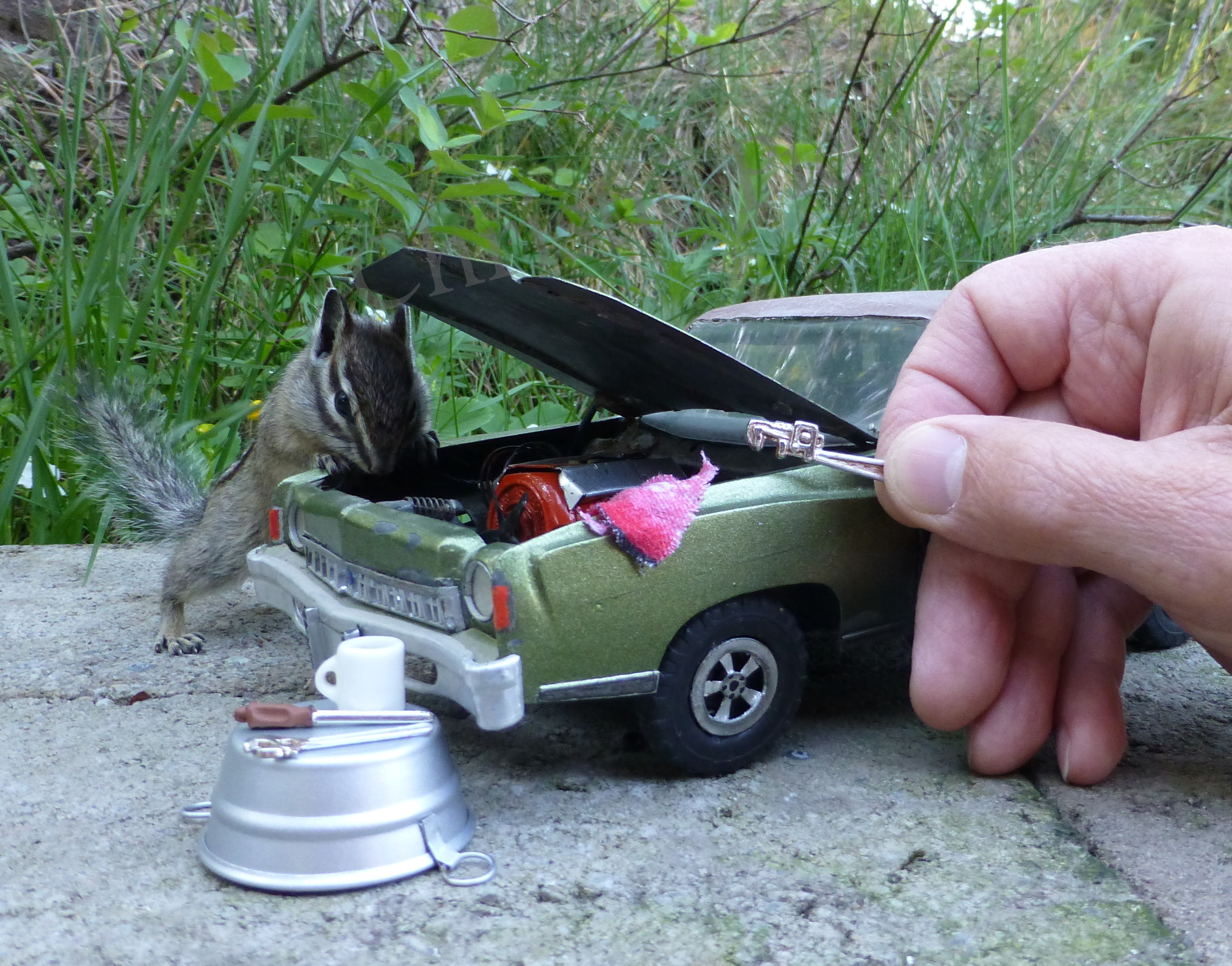
How has your photography evolved?
In time, I learned to get more intimate with the photos. I use better lighting and have an improved camera now. I write down ideas before shooting the work. I try to make the circuit during the holidays now, whether attending a local holiday craft fair at schools around the area or other shows in the neighborhood. There’s usually a good audience interested in buying the photographs during that season.

Nowadays when it comes to the selling of the works, I’d saying 50% of the appeal is the chipmunk(s) and 50% is the miniature props. My husband used to build miniatures when he was younger, before we knew each other. He once made an airplane so small it fit on the tip of his finger, and inside of it was a miniature jeep! Seeing his patience building miniatures made me fall in love with him when we were dating.
A lot of my miniature props have found their way into my possession accidentally. Or, I’ll see something that looks like something else in small scale. The chipmunks are 100% interested in food, not in the props themselves. So, when I put out a new set, they will walk around and sniff everything until they find where the food’s been hidden.
It took a long time for me to figure out the right shots and the appropriate scale to make scenes more intimate. I try not to make my sets too big or too busy, because you need the shot of the chipmunk to stand out and be larger. So it’s really only about a 6 inch space that ends up in the photo.
How do you get the FriendChips stars to pose in your photography?
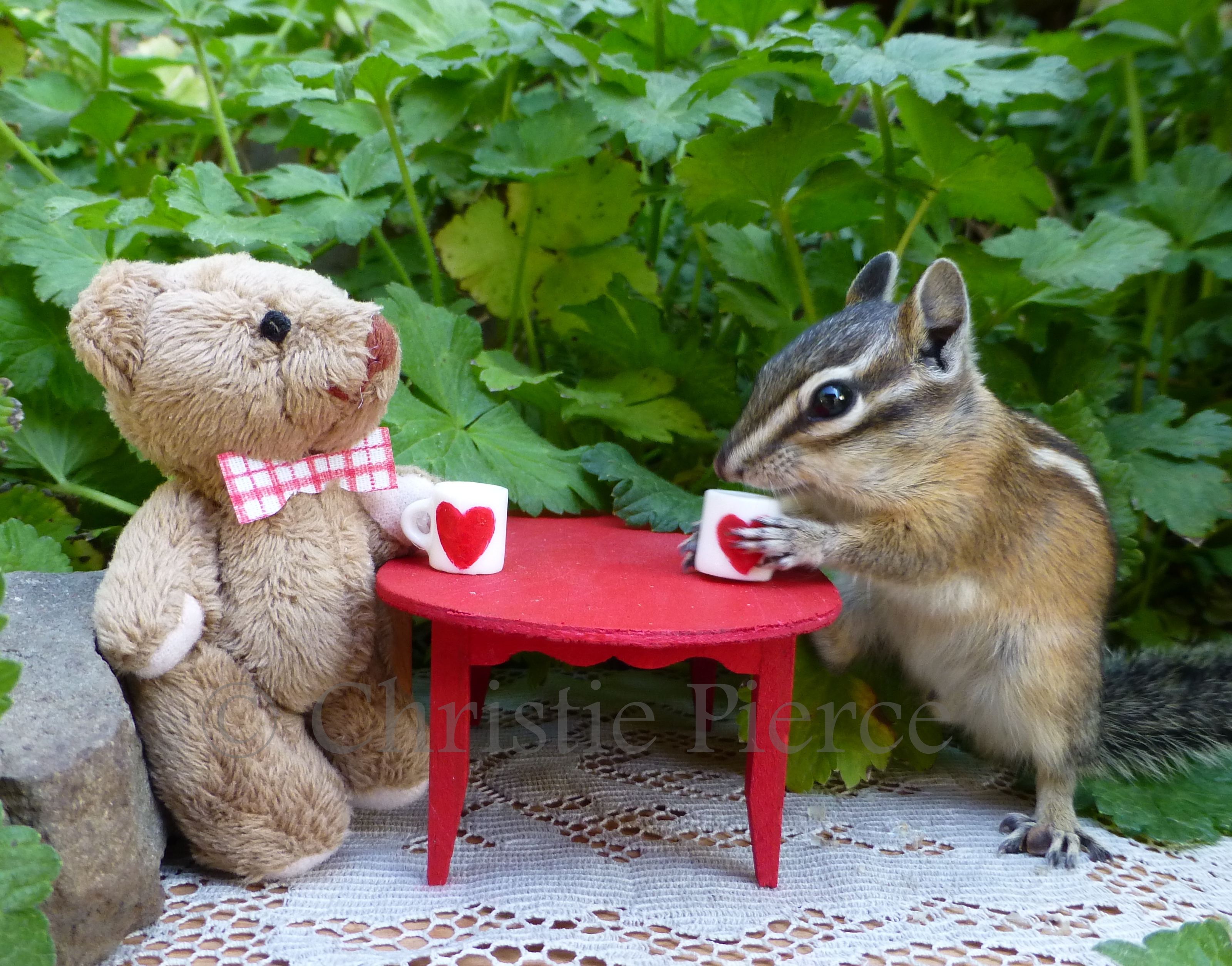
People frequently ask how I bait my photoshoots and what kind of bait I use. I use buckwheat and sunflower seeds. I love sunflower seeds as bait because the ’munks will hold a seed and sit up a bit more to eat it. The magic moment in my photography comes when they’ve taken their last bite. It’s all in that last shot before he or she moves again! The only way that you’d know when to get that perfect shot is to spend the hours that I spend with these animals. My relationship with them has evolved and now they expect certain things of me (food!) and I expect certain things of them (great poses!)
Whenever I’m shooting, I can talk, but I can’t move. Often times, I’ll have to tape down miniature props because they will jump on a set and often times, there’s more than one of them in the mix. And yes, they can fight when there’s more than one chipmunk on the set. For my yard sale photo, I baited the set to include two chipmunks on purpose. And then, at the perfect time, a magpie made a bunch of noise and the ’munk near the pots and pans looked up. It was 100% magic to get that photograph, so you can only strategize to a certain extent. It’s all a happy accident.
Approximately how many chipmunks do you have on your property?
There are a dozen chipmunks around our patio at any given moment. I’d speculate there are around 40 on the hill nearby, and they all come and go and change places rapidly. We’ll see the same couple of guys for a month (we can recognize them because of an injury or nick in their fur), but then the next year, it might be a different group out there. This summer, it’s been about two dozen on the property that I filmed.
To clarify, they are wild chipmunks. Tolerant of me, but wild. And I don’t touch them. And I would never feed them human food. Any of the food props in the photos are either ceramic or plastic. I would never expose them to human food. The chocolate bunny in the Easter photo is ceramic and the bundt cake in another photo is made out of rubber.
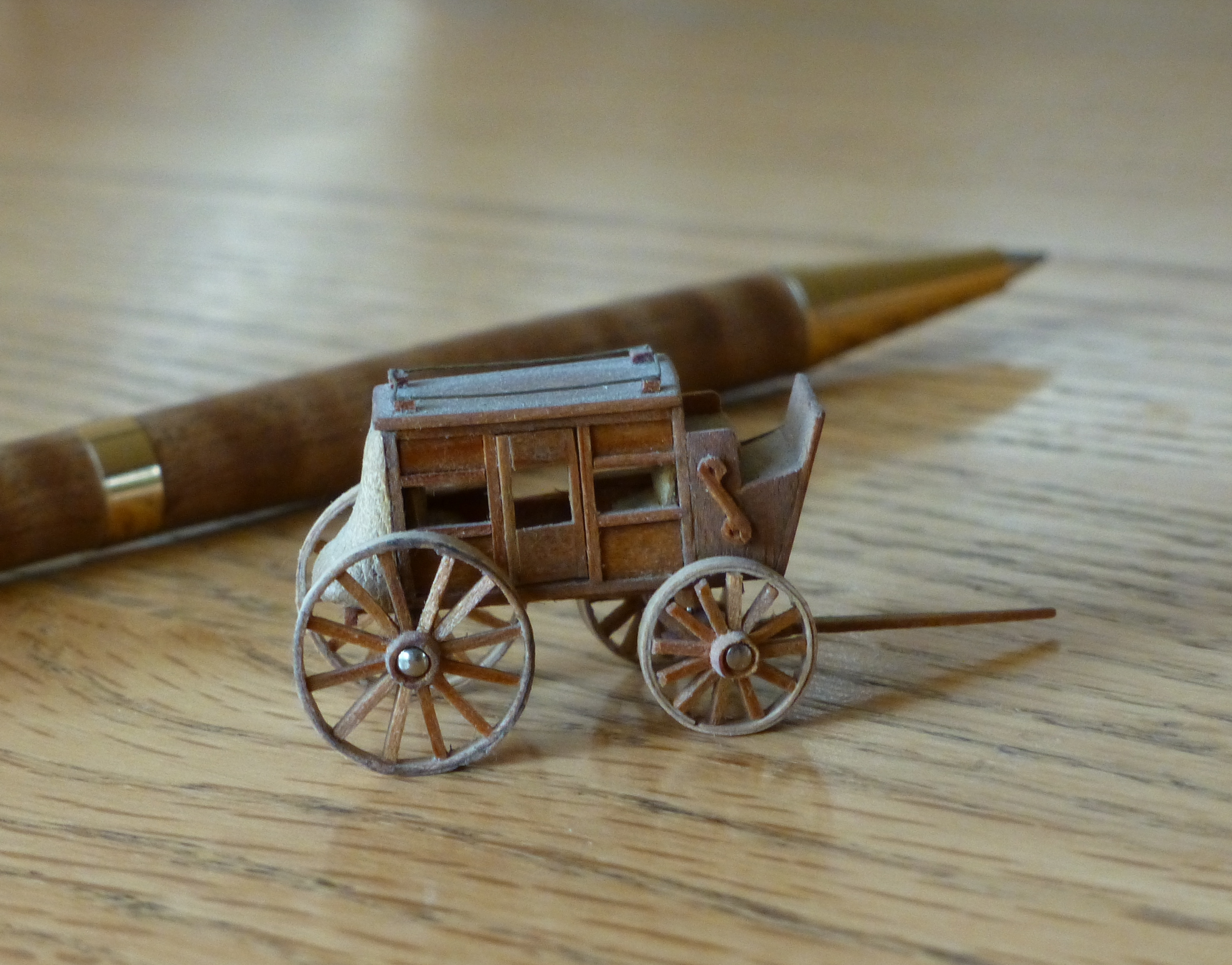
Do you have any favorite miniatures?
Anything my husband has built – whether miniature props or set – has ended up being in the top five selling cards on my site. Often times, these photos will include some props he built as a teenager.
As for my favorite set I’ve worked on, I loved the background of purple flowers you can see in a lot of the spring shots. Photos are taken in my rock garden or in my patio.
What inspires you?
The whole process behind FriendChips inspires me – not just one thing. I’m drawn to the chipmunks picking up cups. It’s hard not to be inspired.
Favorite time of day to shoot FriendChips photos?
When it’s warm, so usually between 6:30 and 9 AM. The shots I’ve been getting have been great during that time of the day, so I must be doing something right. Later in the day there are usually too many shadows to get a great shot. And the chipmunks are hungriest in the morning, too.
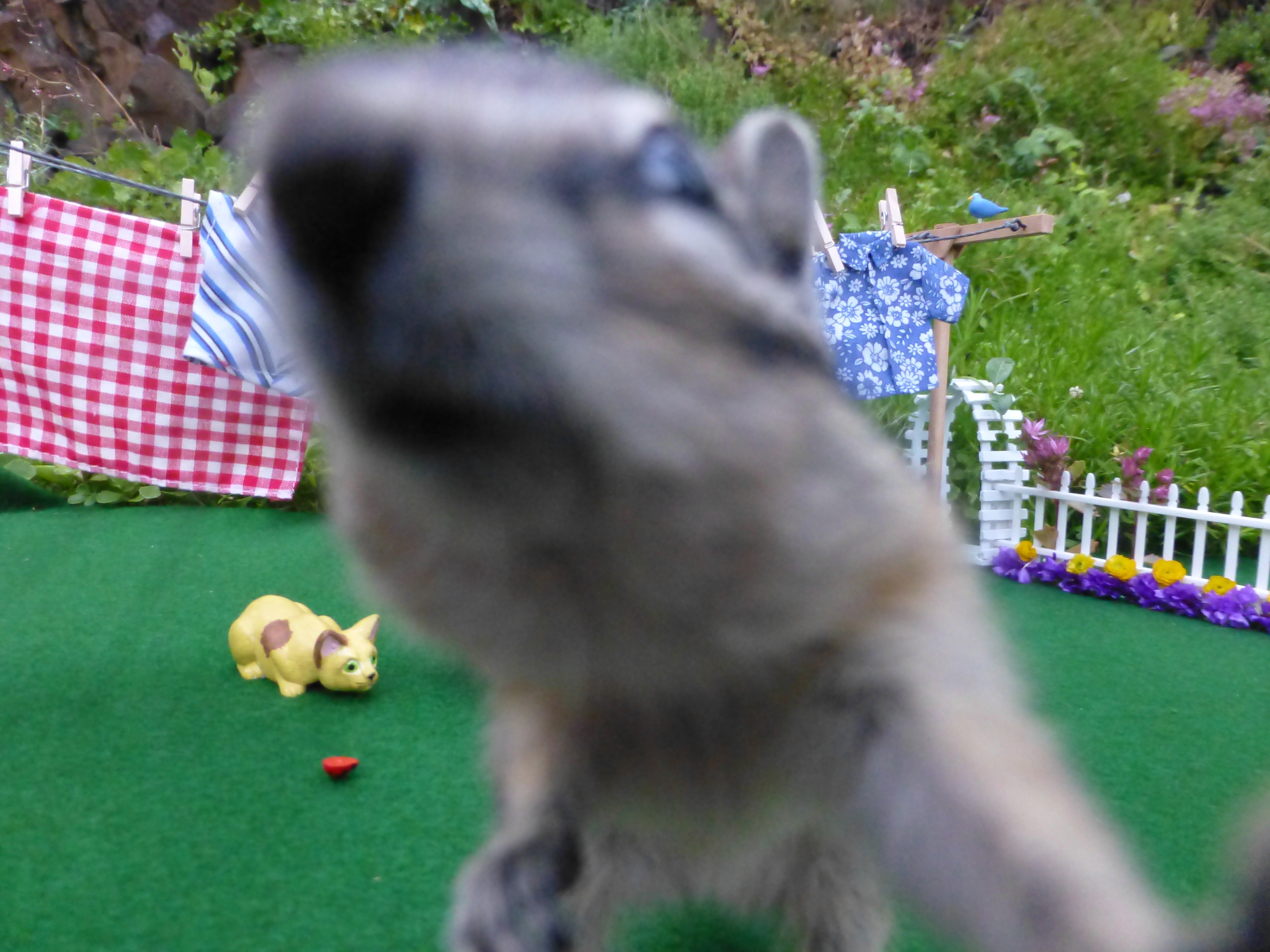
What have you learned about photography through this project and your work with miniature props?
I don’t consider myself a photographer at all. I just use a point and shoot, which is a little faster than my old camera. It gets me what I need to get. However, me knowing the chipmunks’ behavior is how I get the shot. You can’t be even one movement behind them. It’s all about patience with a wild animal. Think about those National Geographic photographers who live in a ditch for about a month all for 30 seconds of a perfect shot.
Why FriendChips miniature photography? What keeps you coming back for more?
I love the creative process. I love building the set, and building the story that I’m going to capture. Secondarily, I love people’s reactions to my photographs. I’m addicted to show and tell. I love when they exclaim, “how did you get that!?” and to see fans enamored with the little sets, it makes it all worth it. People keep coming back for more! So, I’m truly addicted to people’s reactions and the joy that all of this spreads.
Plus, the chipmunks are easier than having a pet. They live outside and do their own thing. They are absolutely the perfect candidate for this type of photography. They pick things up. They can stand up. They do human things and animal things. They have opposable thumbs! They make amazing poses just by being themselves! That’s what makes it so fun.
I’m standing up the entire time of a shoot, eye level with them. So it’s a gift to be this involved. And it’s evolved to be so much fun. I will build the set and place all the props into a bucket. I’ll work through the winter on strategizing what to rebuild the next season.
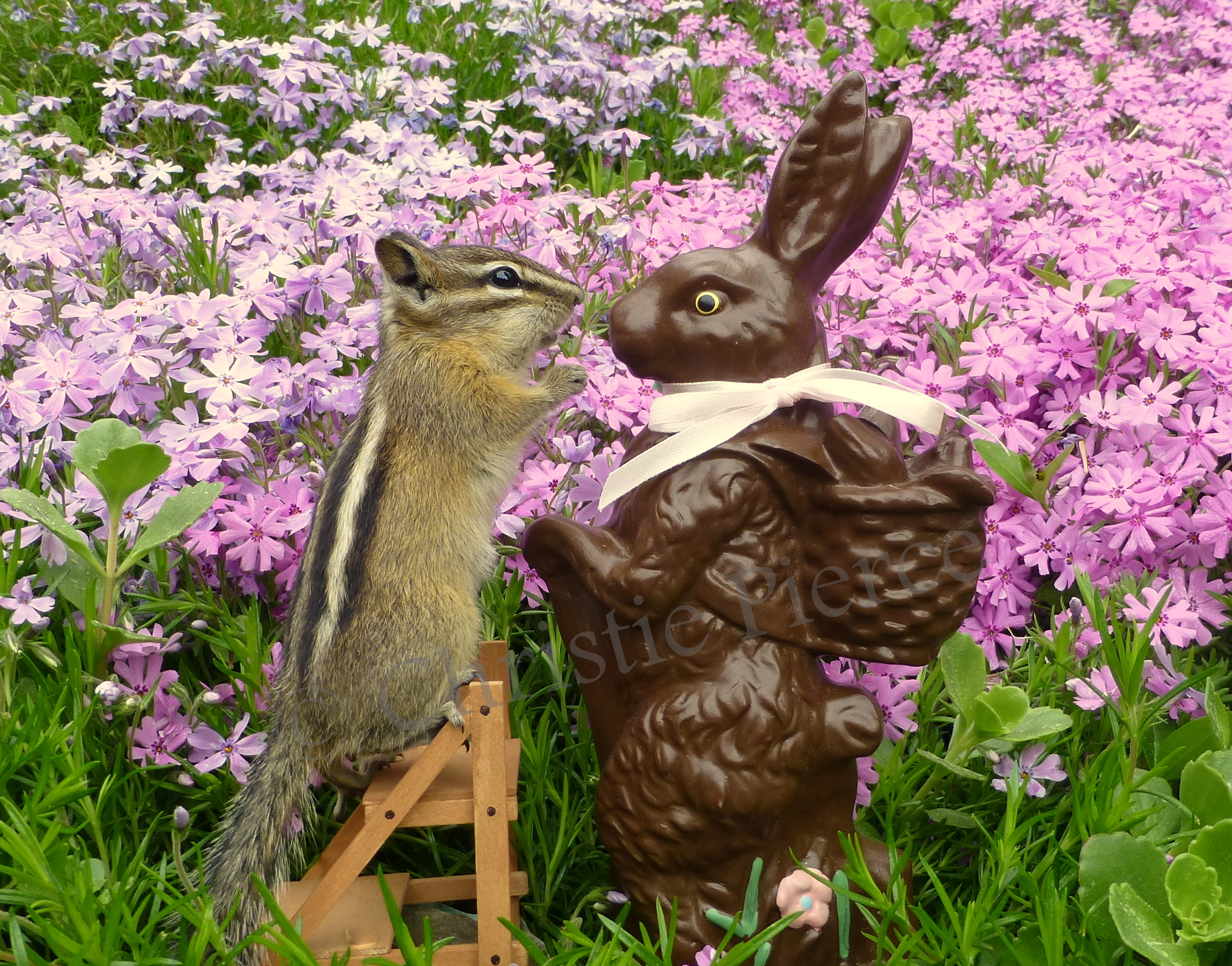
What’s to come from FriendChips in the future?
The season is done, so there will be no more photos this year. I usually get most of my shots sometime between May and June when all the purple flowers are blooming. The hotter it is outside, the less likely the chipmunks will be running about.
Creatively, it’s hard to get to a done point per se. You have a vision of what you want to accomplish. And when your juices are done, they are done. At any time, I have a storyboard of about 25 ideas written to do and I have lots of projects I’m looking to tackle next year. A lot of these projects will require time from me to strategize on the set. I want to do a little snowmobile set with sledders on a hill. I’ll use felt to make it look like snow.
What are your favorite FriendChips photos you’ve taken?
I don’t have one favorite because I love so many of them. I love “Laundry Day” and the chocolate bunny Easter photo. I got exactly what I wanted to get with both photos.
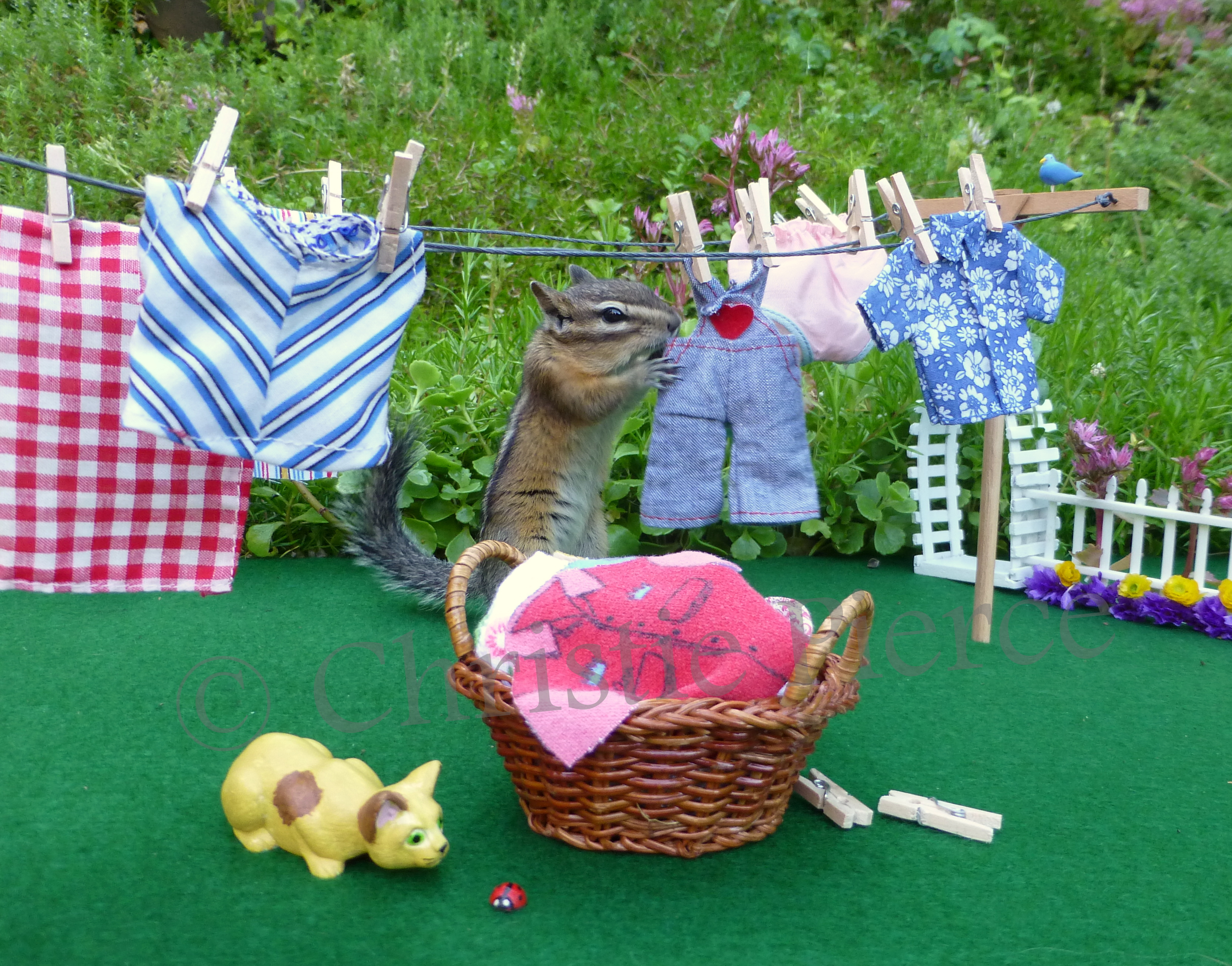
Paul made the step ladder just for that bunny shoot. The photo happened as I had envisioned, which only occurs about 60% of the time. It’s magic when it happens so perfectly amidst all these wild chipmunks.
Another shot I love is the one that features a little house that my husband made when he was five years old. He also made the saw and the toolbox for the photo. People are absolutely enchanted with the lunch bag and the coffee cup in the background. I even sprinkled a little sawdust in the photo so it looks like the chipmunk is sawing in the photo. It took a great deal of strategy and about all day to get the set ready. And then, I got the shot within 20 minutes!
I love looking at the calendars – it’s as if I’m viewing them for the first time. There’s a joy about what the image does to you.
One other memorable shoot was when the flowers on the property had begun to bloom. There were these columbines and the weather turned bad. Finally, I was able to get this shot of the columbine as a lamp on a desk. The day after I got the shot was the last day that particular flower was even around!
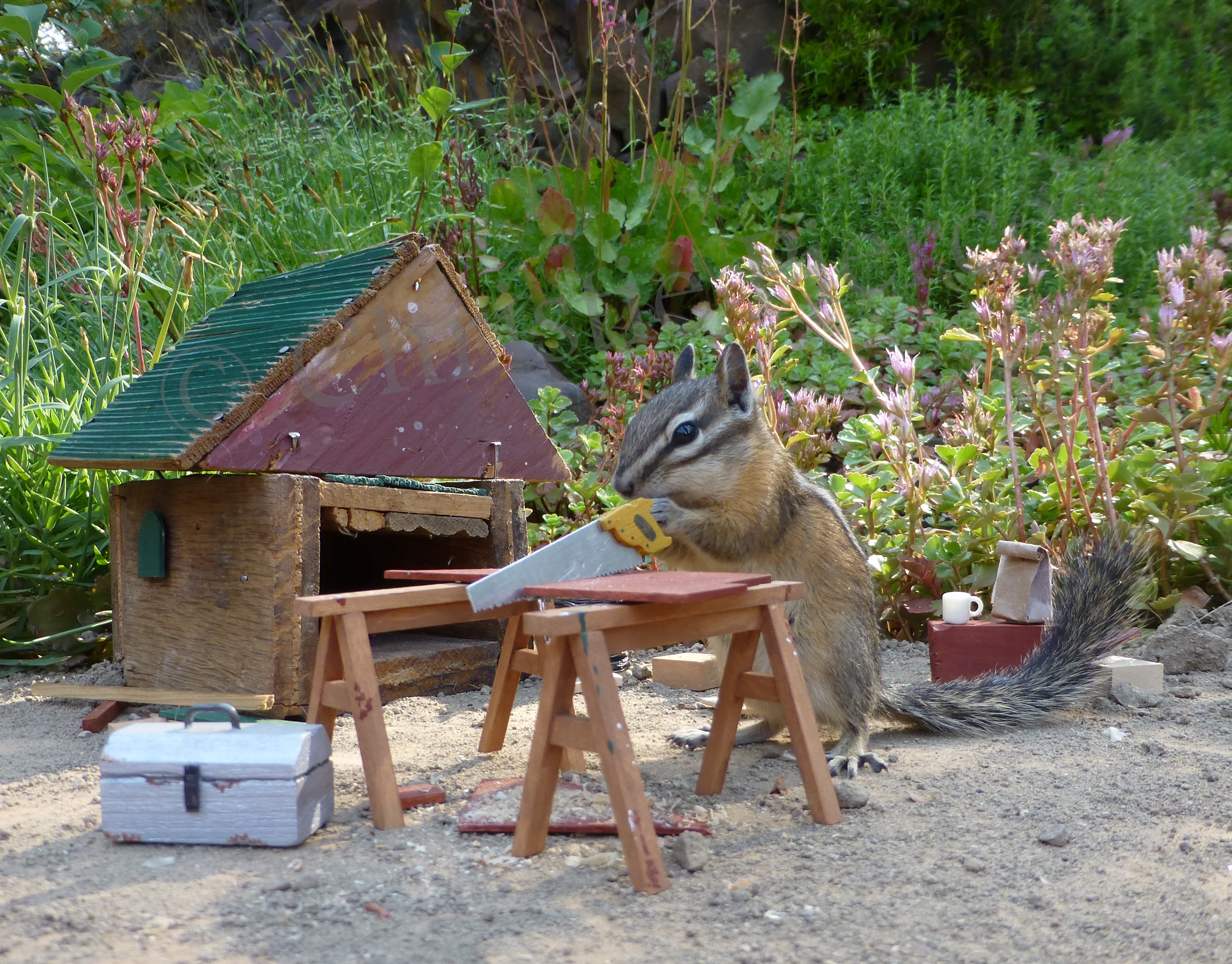
Advice for photographers?
Know your subject. That applies to anyone working in nature photography. That, and luck. For every shot I get and sell, there’s about 50-80 deleted photos from trying to get the right one. Chipmunks run around like a blur. That’s what they’re supposed to do. They have to because of the hawks around. So they run around for about 5 minutes before moving on to the next location. This type of photography involves a great deal of baiting and waiting.
What’s to come from FriendChips?
I’m knee-deep in the selling season right now. I’m working on building the next calendar. I’m always shooting very far in advance, so I have 2017 and 2018 calendars already complete. The 2019 FriendChips calendar is almost complete, too! And the 2016 calendar is available for purchase online.
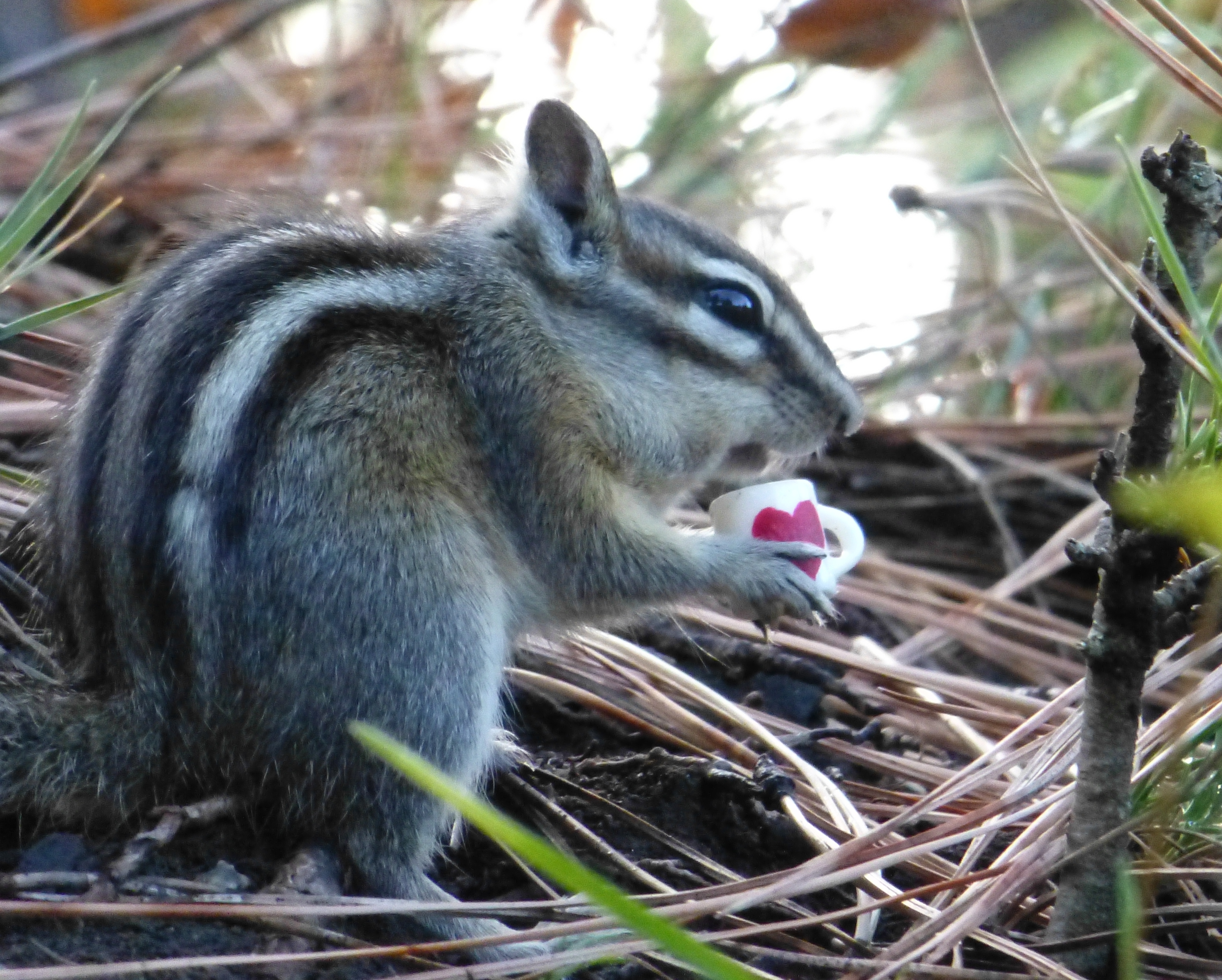
I’d love to put together a coffee table or a children’s book of these photos. Couple the images with sweet messages and what have you. I just love that the joyfulness of all of this transcends all age groups.
Anything else you would like to add?
I obtained my business license in 2013, so I’m just now nearing completion of my second selling season. FriendChips work is available through 37 retailers already.
Christie Pierce is the photographer behind FriendChips. You can view many more of her works on the Forming FriendChips website and shop the collection online!
